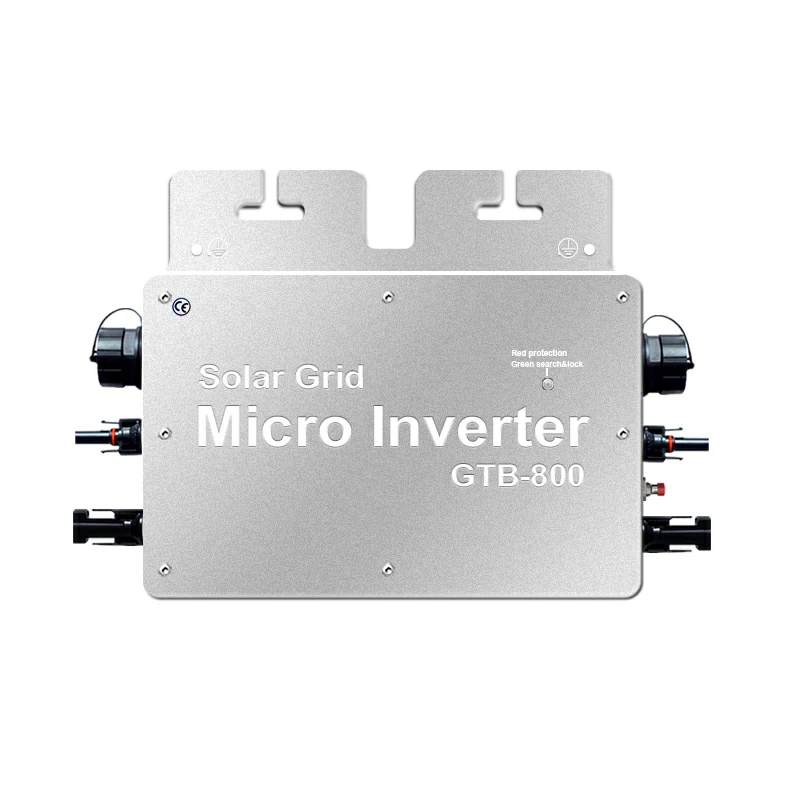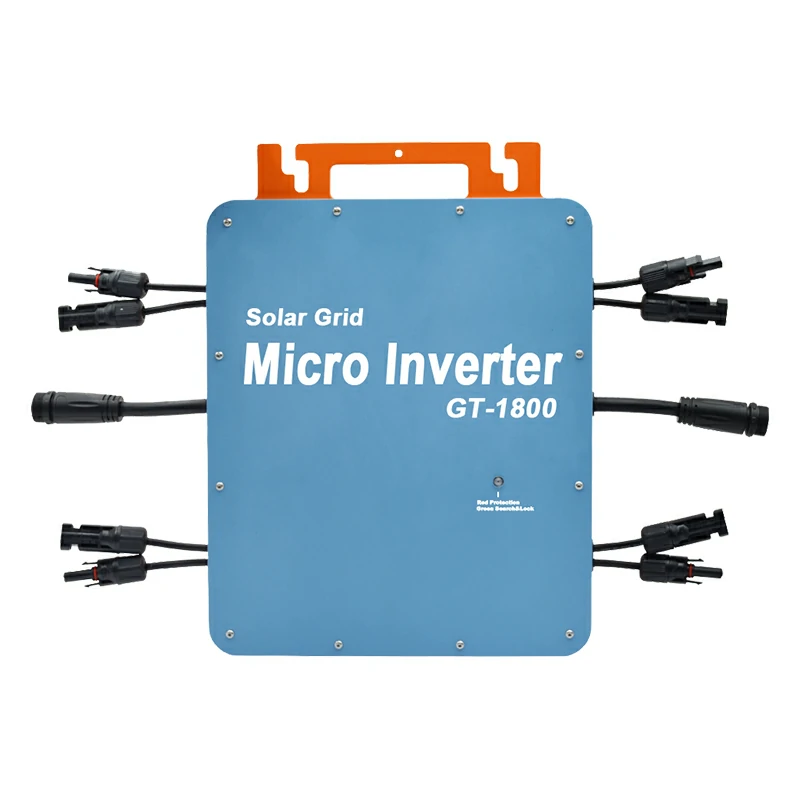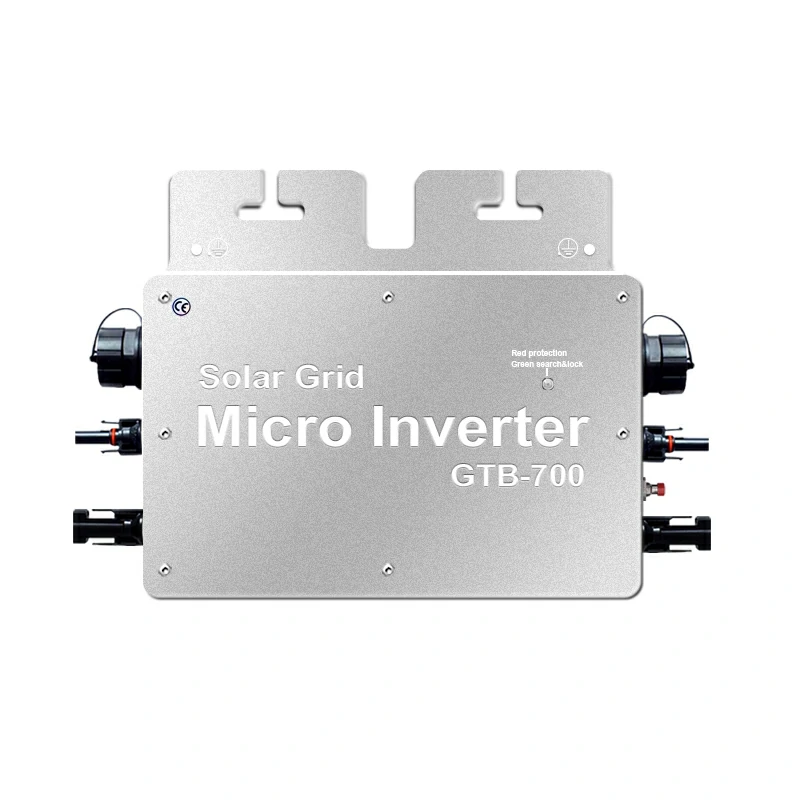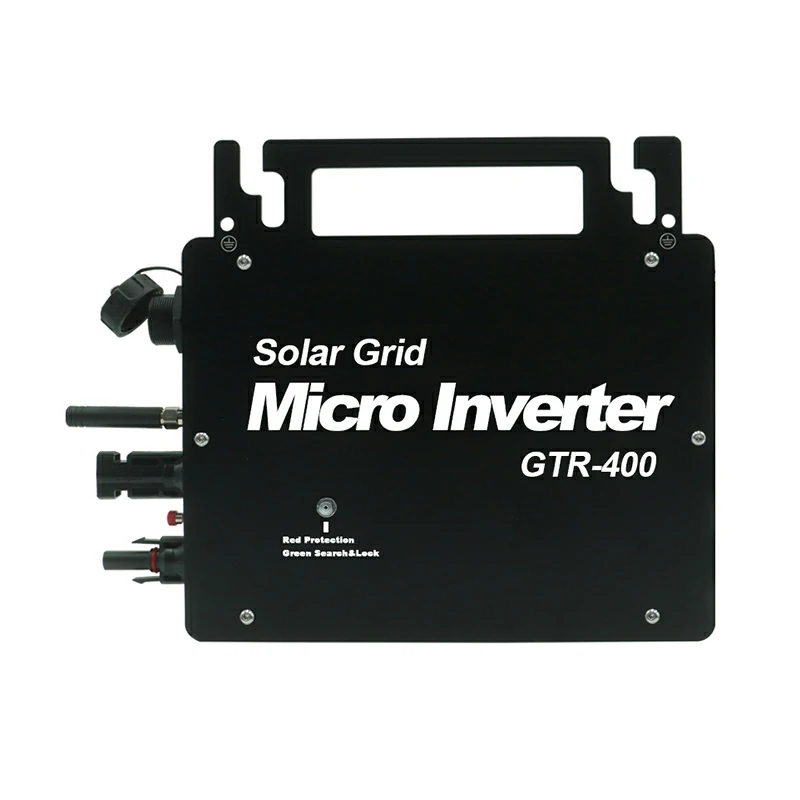Introduction
Distributed solar energy networks have revolutionized how we harness solar power, allowing for decentralized energy production and reduced reliance on traditional fossil fuels. At the heart of these networks lie micro inverters, crucial components that convert the DC electricity generated by individual solar panels into AC electricity usable by households and the grid.

Importance of Micro Inverters
Unlike traditional string inverters, which connect multiple solar panels in series, micro inverters are installed on each solar panel individually. This allows for greater flexibility, efficiency, and reliability in solar energy systems, especially in environments prone to shading or panel mismatch.
Purpose of the Article
In this article, we will delve into the role of grid-tied micro inverters in enhancing the stability and efficiency of distributed solar energy networks. We’ll explore how these innovative devices mitigate common challenges solar installations face and provide tangible benefits to users.
Understanding Grid-tied Micro Inverters
Grid-tied micro inverters, also known as grid-connected inverters, are essential components of modern solar energy systems. Unlike standalone inverters, grid-tied microinverters are designed to synchronize with the utility grid, allowing seamless integration of solar power into the existing electrical infrastructure.
Functionality of Micro Inverters
Micro-inverters convert the direct current (DC) electricity generated by individual solar panels into alternating (AC) electricity, which matches the standard electrical grid voltage and frequency. Each micro-inverter is connected to a single solar panel, enabling independent operation and optimization of power output.
Advantages over Traditional String Inverters
The use of grid-tied micro inverters offers several advantages over traditional string inverters:
- Enhanced Performance: By operating at the panel level, micro inverters mitigate the impact of shading, dust, or panel degradation, maximizing energy production even in suboptimal conditions.
- Increased System Flexibility: Unlike string inverters, which are limited by the performance of the weakest panel in the string, micro-inverters allow each panel to operate independently, optimizing performance across the entire array.
- Improved Reliability: The decentralized nature of micro-inverter systems reduces the risk of system-wide failures caused by a single point of failure, ensuring more excellent reliability and uptime.
- Monitoring and Diagnostics: Grid-tied micro inverters often come equipped with advanced monitoring and diagnostic capabilities, allowing users to track system performance in real time and identify any potential issues promptly.
Integration with Solar Panels
Micro inverters are designed to be compatible with a wide range of solar panels, including monocrystalline and polycrystalline variants. Installation is straightforward, with each micro inverter connected directly to the terminals of its corresponding solar panel.
Stability Enhancement in Distributed Solar Energy Networks
Grid-tied micro inverters play a crucial role in enhancing the stability of distributed solar energy networks by addressing common challenges such as shading and panel mismatch. Here’s how they achieve this:
Mitigation of Shading Effects
Shading from nearby objects such as trees, buildings, or even clouds can significantly reduce the output of solar panels connected in series. Traditional string inverters are particularly susceptible to shading, as the performance of the entire string is limited by the least productive panel. However, with grid-tied microinverters, each solar panel operates independently, minimizing the impact of shading on overall system performance. Even if one panel is partially shaded, the remaining panels continue to generate electricity at their maximum capacity, maintaining stable energy production.
Maximizing Power Generation from Each Solar Panel
Grid-tied micro inverters employ Maximum Power Point Tracking (MPPT) technology at the individual panel level. This allows each micro inverter to continuously adjust its operating parameters to ensure that the connected solar panel operates at its maximum power point, regardless of external conditions. As a result, grid-tied micro inverters maximize the power generation potential of each solar panel, optimizing overall system efficiency and stability.
Impact on Overall System Performance
In distributed solar energy networks, where multiple solar panels are interconnected, the entire system’s performance can be affected by factors such as panel degradation or failure. Grid-tied micro inverters help mitigate these risks by isolating the effects of any individual panel issues. In the event of a panel failure or malfunction, only the affected panel is affected, while the rest of the system continues to operate normally. This ensures excellent system stability and reliability, minimizing downtime and maximizing energy production.
Efficiency Improvement in Distributed Solar Energy Networks
Grid-tied micro inverters contribute to the efficiency of distributed solar energy networks in several ways, optimizing energy production and minimizing losses. Here’s how they achieve this:
MPPT Optimization at the Panel Level
Maximum PowerPoint Tracking (MPPT) is a critical function of inverters. It allows them to continuously adjust the operating voltage and current to ensure the connected solar panels operate at their maximum power output. Grid-tied micro inverters perform MPPT at the individual panel level, optimizing the performance of each panel independently. This fine-grained control results in higher overall system efficiency, especially when panels are subject to varying levels of sunlight or shading.
Reduction of Energy Losses Due to Panel Mismatch
In traditional string inverter systems, the weakest panel limits the entire string’s performance, resulting in energy losses when panels are mismatched in output voltage or current. Grid-tied micro inverters eliminate this issue by operating each panel independently. This means that even if panels in the system have different specifications or performance characteristics, the micro inverters can adjust their operation to maximize the energy harvested from each panel, minimizing losses due to panel mismatch.
Real-time Monitoring and Data Analytics
Many grid-tied micro-inverter systems have advanced monitoring and data analytics capabilities. Users can remotely monitor the performance of their solar energy systems in real-time, tracking metrics such as energy production, system efficiency, and individual panel performance. By leveraging this data, users can identify potential issues early, optimize system performance, and maximize energy production over time. Additionally, these insights allow for informed decision-making regarding system maintenance and upgrades, further enhancing efficiency and reliability.
Integration with Energy Management Systems
Grid-tied micro inverters can also be integrated with energy management systems, allowing seamless integration with other renewable energy sources, such as wind or battery storage. This enables users to maximize the use of renewable energy resources and optimize energy consumption patterns, further improving distributed solar energy networks’ overall efficiency and sustainability.
Reliability and Safety Features
Grid-tied microinverters are designed with robust reliability and safety features to ensure seamless operation and protect the system and users. Here are some key aspects:
Integrated Safety Mechanisms
Grid-tied micro inverters incorporate various safety mechanisms to prevent electrical hazards and ensure user safety. These may include overvoltage protection, overcurrent protection, and ground fault detection. In the event of a fault or abnormal operating conditions, micro inverters automatically disconnect from the grid, preventing damage to the system and reducing the risk of electrical accidents.
Built-in Fault Detection and Rapid Shutdown Capabilities
Micro inverters have built-in fault detection capabilities continuously monitoring the system’s performance. In the event of a malfunction or abnormal behavior, micro inverters can quickly identify the issue and initiate a rapid shutdown sequence. This ensures that the system is safely disconnected from the grid, minimizing the risk of fire or electrical damage. Rapid shutdown capabilities also facilitate maintenance and troubleshooting, allowing technicians to work safely on the system without exposing themselves to live electrical components.
Compliance with Industry Standards and Certifications
Grid-tied micro inverters undergo rigorous testing and certification processes to ensure compliance with industry standards and regulations. Typical certifications include UL (Underwriters Laboratories), CE (Conformité Européenne), and IEEE (Institute of Electrical and Electronics Engineers) standards. Compliance with these standards demonstrates that micro-inverters meet strict safety and performance requirements, providing users with confidence in the reliability and safety of their solar energy systems.
Enhanced Durability and Weather Resistance
Micro inverters are designed to withstand harsh environmental conditions, including extreme temperatures, humidity, and weather exposure. Encapsulated in robust and weather-resistant enclosures, microinverters are protected from moisture, dust, and debris, ensuring long-term reliability and performance. Additionally, many micro-inverters feature extended warranties, providing users with peace of mind and assurance of continued operation and support.
Cost-effectiveness and Return on Investment
While the initial investment in grid-tied microinverters may be higher than traditional string inverters, their long-term benefits and return on investment (ROI) make them a cost-effective choice for solar energy systems. Here’s how:
Initial Investment vs. Long-term Benefits
Grid-tied micro inverters typically have a higher upfront cost per panel than string inverters. However, micro inverters often offer better value over the system’s lifetime when considering the overall system cost, including installation, maintenance, and potential energy losses. Micro inverters’ enhanced performance, reliability, and flexibility translate into higher energy production and lower maintenance costs, resulting in long-term savings and improved ROI.
Potential Savings in Maintenance and Operation Costs
Grid-tied micro inverters require minimal maintenance compared to traditional string inverters. With no central inverter to maintain and fewer components prone to failure, micro-inverter systems experience lower downtime and reduced maintenance expenses. Additionally, the decentralized nature of micro inverters simplifies troubleshooting and repairs, further minimizing operational costs and maximizing system uptime.
Calculating ROI for Micro Inverter Installations
Calculating the return on investment for grid-tied micro inverters involves analyzing various factors, including upfront costs, energy production, electricity savings, and system longevity. By comparing the projected savings in electricity bills and maintenance costs with the initial investment, users can determine the payback period and overall ROI of investing in microinverter technology. Factors such as local electricity rates, available incentives, and system performance expectations should be considered to assess micro-inverter installations’ financial viability accurately.
Long-term Value and Sustainability
Beyond financial considerations, grid-tied microinverters offer long-term value and sustainability benefits. By maximizing energy production and reducing reliance on grid electricity, micro-inverter systems contribute to environmental conservation and carbon emissions reduction. Their scalability and adaptability also make them well-suited for future expansion and integration with emerging technologies, ensuring continued relevance and value in the evolving energy landscape.
Case Studies and Testimonials
Real-world examples and testimonials provide valuable insights into the performance and benefits of grid-tied micro inverters in distributed solar energy networks. Here are some illustrative case studies and testimonials:
Case Study 1: Residential Installation
A California homeowner, John Smith, opted for a grid-tied microinverter system for his residential solar installation. John’s microinverter system consistently outperforms his neighbors’ string inverter systems despite occasional shading from nearby trees. With real-time monitoring and optimization capabilities, John’s system maximizes energy production, resulting in significant savings on his electricity bills.
Case Study 2: Commercial Installation
ABC Corporation, a commercial entity in New York, installed a large-scale solar energy system utilizing grid-tied micro inverters. The decentralized nature of micro inverters allowed for seamless integration with the existing electrical infrastructure, minimizing installation time and costs. The system’s reliability and performance have exceeded expectations, providing ABC Corporation with substantial energy savings and a positive return on investment.
Testimonials from Users
“I’ve been using grid-tied micro inverters for over five years, and I couldn’t be happier with their performance. Thanks to the individual optimization of each panel, my system continues to generate electricity even on cloudy days.”—Sarah L., Solar Energy Enthusiast.
“I switched to micro inverters after experiencing frequent downtime with my old string inverter system. Since then, I’ve enjoyed uninterrupted energy production and peace of mind knowing that advanced monitoring and safety features back my system.” – Michael T., Homeowner.
Comparative Analysis
Independent studies and comparative analyses have consistently shown the superiority of grid-tied micro inverters over traditional string inverters regarding performance, reliability, and return on investment. With higher energy yields, lower maintenance costs, and improved system uptime, micro-inverter systems offer tangible benefits to users across residential, commercial, and industrial applications.
Conclusion
Grid-tied microinverters are not just components of solar energy systems—they are enablers of stability, efficiency, and progress in the transition towards a cleaner, greener energy landscape. Their proven performance, reliability, and efficiency make them the preferred choice for users seeking to harness the sun’s power and contribute to a more sustainable future.
In conclusion, grid-tied microinverters offer a comprehensive solution for enhancing stability and efficiency in distributed solar energy networks. By maximizing energy production, optimizing system performance, and ensuring reliability and safety, micro inverters empower users to realize the full potential of solar energy and accelerate the transition towards a more sustainable energy future.




